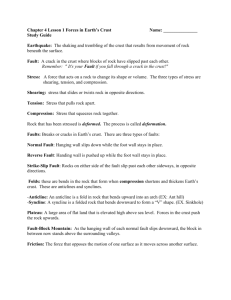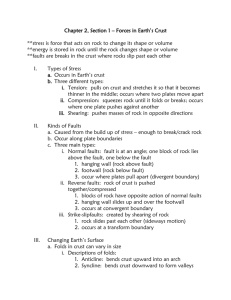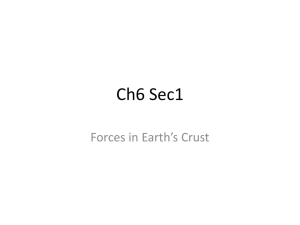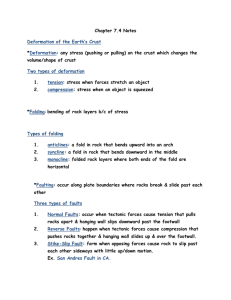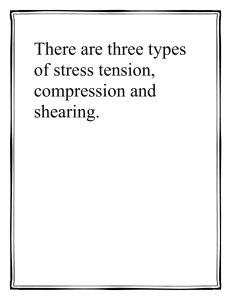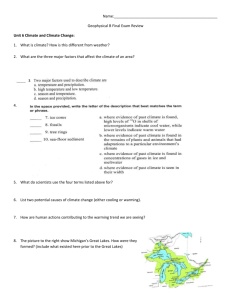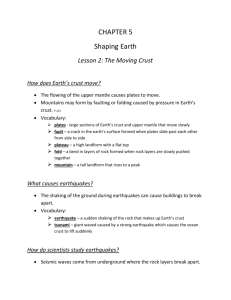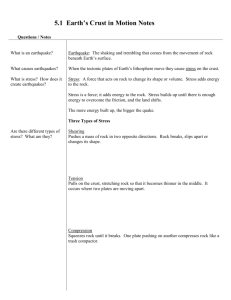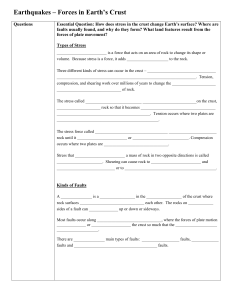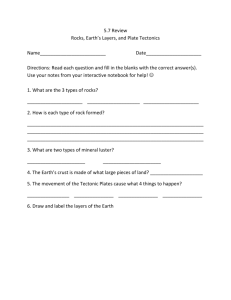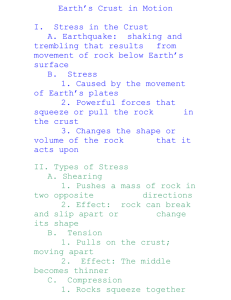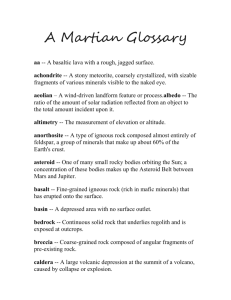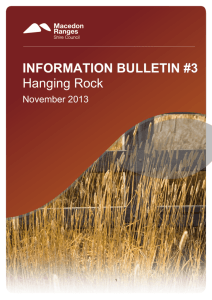Chapter 5: section 1 Stress- a force that works on an area of rock to
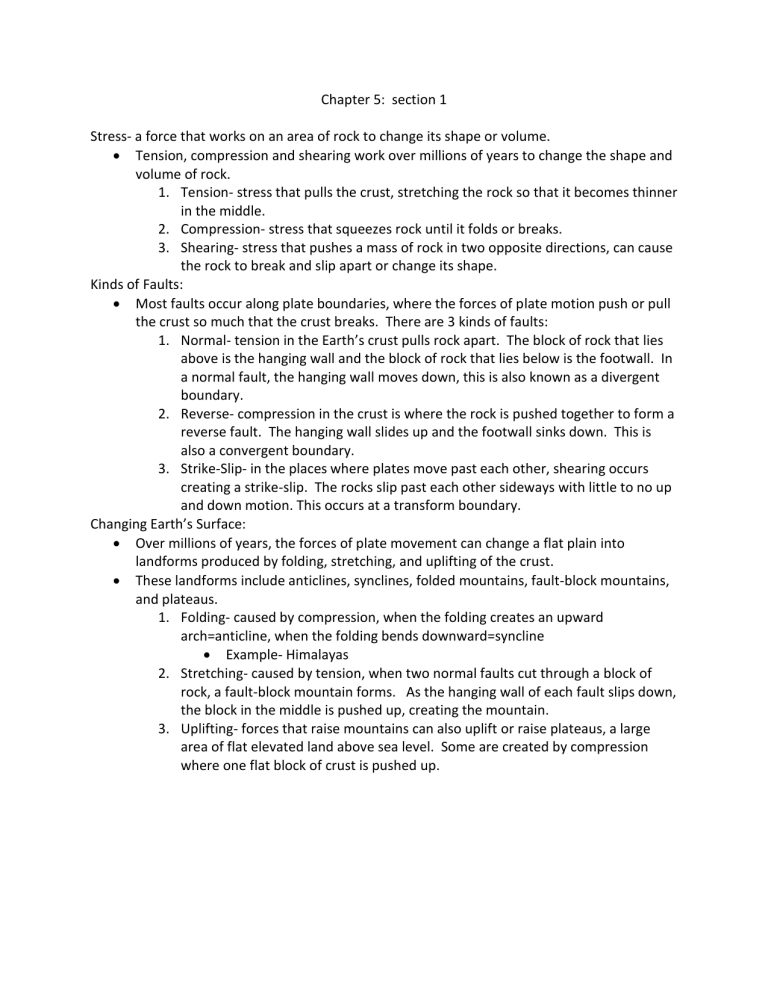
Chapter 5: section 1
Stress- a force that works on an area of rock to change its shape or volume.
Tension, compression and shearing work over millions of years to change the shape and volume of rock.
1.
Tension- stress that pulls the crust, stretching the rock so that it becomes thinner in the middle.
2.
Compression- stress that squeezes rock until it folds or breaks.
3.
Shearing- stress that pushes a mass of rock in two opposite directions, can cause the rock to break and slip apart or change its shape.
Kinds of Faults:
Most faults occur along plate boundaries, where the forces of plate motion push or pull the crust so much that the crust breaks. There are 3 kinds of faults:
1.
Normal- tension in the Earth’s crust pulls rock apart. The block of rock that lies above is the hanging wall and the block of rock that lies below is the footwall. In a normal fault, the hanging wall moves down, this is also known as a divergent boundary.
2.
Reverse- compression in the crust is where the rock is pushed together to form a reverse fault. The hanging wall slides up and the footwall sinks down. This is also a convergent boundary.
3.
Strike-Slip- in the places where plates move past each other, shearing occurs creating a strike-slip. The rocks slip past each other sideways with little to no up and down motion. This occurs at a transform boundary.
Changing Earth’s Surface:
Over millions of years, the forces of plate movement can change a flat plain into landforms produced by folding, stretching, and uplifting of the crust.
These landforms include anticlines, synclines, folded mountains, fault-block mountains, and plateaus.
1.
Folding- caused by compression, when the folding creates an upward arch=anticline, when the folding bends downward=syncline
Example- Himalayas
2.
Stretching- caused by tension, when two normal faults cut through a block of rock, a fault-block mountain forms. As the hanging wall of each fault slips down, the block in the middle is pushed up, creating the mountain.
3.
Uplifting- forces that raise mountains can also uplift or raise plateaus, a large area of flat elevated land above sea level. Some are created by compression where one flat block of crust is pushed up.
